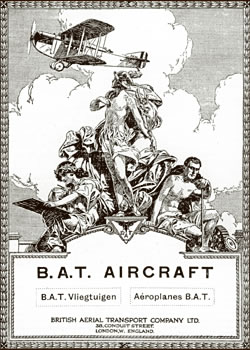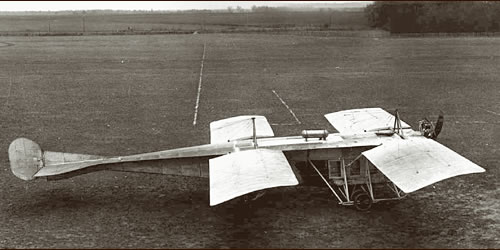
About
the
statement
and
other
first
airliners
copie
intégrale
de
http://www.koolhoven.com/history/fk26/
by
Henri
Kaper,
webmaster
When
you
use
the
words
"world's
first"
there
will
be
people
who
do
not
agree.
Just
like
the
flight
of
the
Wright
Brothers,
as
"the
world's
first
motorized
flight",
is
still
being
questioned
because
before
this
famous
occasion
there
were
the
short
flights
made
by
Richard
Pearse
and
Gustav
Weißkopf.
Some
others
believe
it
is
Clément
Ader
who
should
be
honored.
Today
the
Wright
Brothers
are
generally
accepted
as
the
world's
first
because
their
flight
was
regarded
as
true,
controlled
flight.
(Another
reason
was
that
there
was
no
convincing
proof
for
the
earlier
claims.)
In
the
same
way
the
question
of
which
aircraft
was
the
world's
first
airliner
is
not
a
matter
of
plain
historical
dates
...
it
also
depends
on
the
definition
of
"airliner".
Frederick Koolhoven was not the first to foresee passenger transport by air. From the beginning of aviation people had fantastic visions of future possibilities and a few made first efforts to bring them into practice. Like Albessard who built a tandem monoplane with a passenger cabin in 1912. He gave up on the aircraft after unsuccessful tests which were performed with only the pilot aboard.

At the end of 1911, the famous Louis Blériot had also built a cabin aircraft for four passengers and a pilot outside. This Blériot XXIV 'Limousin' was a special order for a certain Henri Deutsch de la Meurthe.
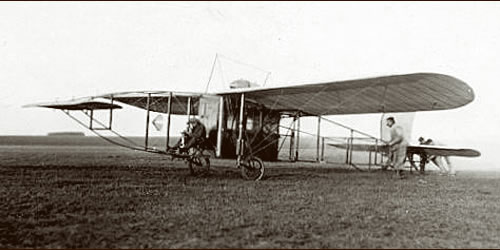
There have been a few more aircraft like these, built for several reasons. Aircraft were still a bit of a circus act and taking more people up in the air was already quite a feat; some were solely build for these record attempts. These first passenger aircraft may have been a sign of things to come; they were no airliners yet ... there's a difference. It was simply to early for commercial aviation. Aviation first needed the technical development made in World War I.
There
was
one
scheduled
service
flown
by
an
aircraft
before
World
War
I
though
...
the
Tampa-St.Petersburg
line
starting
at
January
1,
1914.
The
aircraft
used
for
this
service
was
a
flying
boat,
the
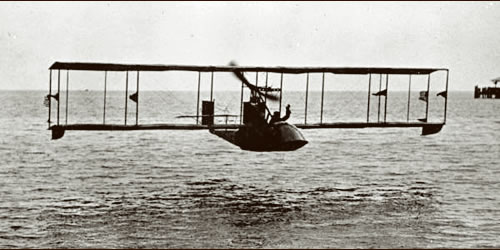
The
"airliner"
is
a
specific
type
of
aircraft,
designed
for
the
use
of
airlines,
which
concept
takes
comfort
and
economy
in
account.
Therefore
other
types
of
aircraft
that
have
been
used
for
airlines,
be
it
general
aviation
aircraft
or
converted
military
aircraft,
are
no
true
airliners.
Like,
if
some
It's
the
intention
with
which
the
aircraft
was
designed
and
built
that
matters
...
was
the
design
originally
meant
for
the
commercial
transport
of
passengers?
The
Sikorsky
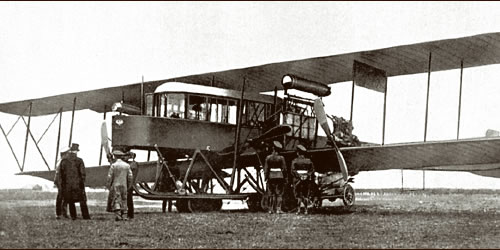
In the last days of World War I the Farman company built the prototype for what should have been the 'Goliath' bomber, was it not that the war ended. The design was converted to a civil version which is successfully flown by several airlines. Still, the Farman F.60 'Goliath' was a bomber by origin.

Similarly the Vickers Vimy 'Commercial' was a spin-off from the well known Vickers Vimy bomber.
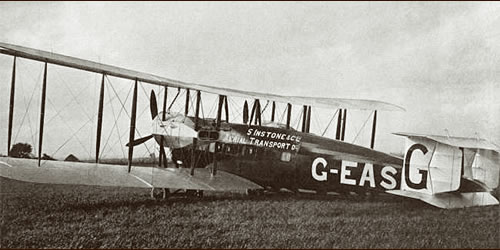
At
this
point,
in
April
1919,
the
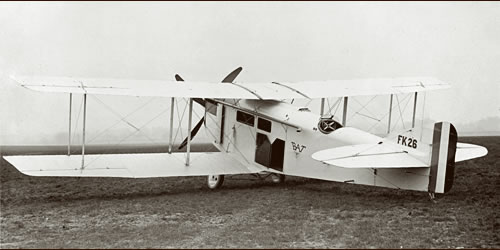
Before
World
War
II
the
In
the
same
year
The
Junkers

In
the
United
States
the
remarkable
Shortly
after,
Alfred
Lawson
was
a
great
talent
for
publicity,
he
took
his
aircraft
on
a
Unlike
the

The
Fokker
F.II,
the
first
of
the
very
successful
Fokker
airliners,
made
its
first
flight
as
late
as
October
1919.
The
F.II
had
a
cabin
for
four
passengers
and
has
flown
in
service
with
the
KLM
and
the
Lufthansa.
(Its
predecessor,
the
V.44
or
F.I,
was
built
very
much
like
a
military
aircraft,
with
open
cockpits.
Because
the
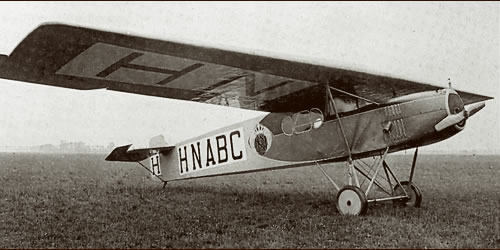
The world is a busy place. Frederick Koolhoven was not the only one having the idea, yet he was the first to realize it ... the first true airliner in history.
